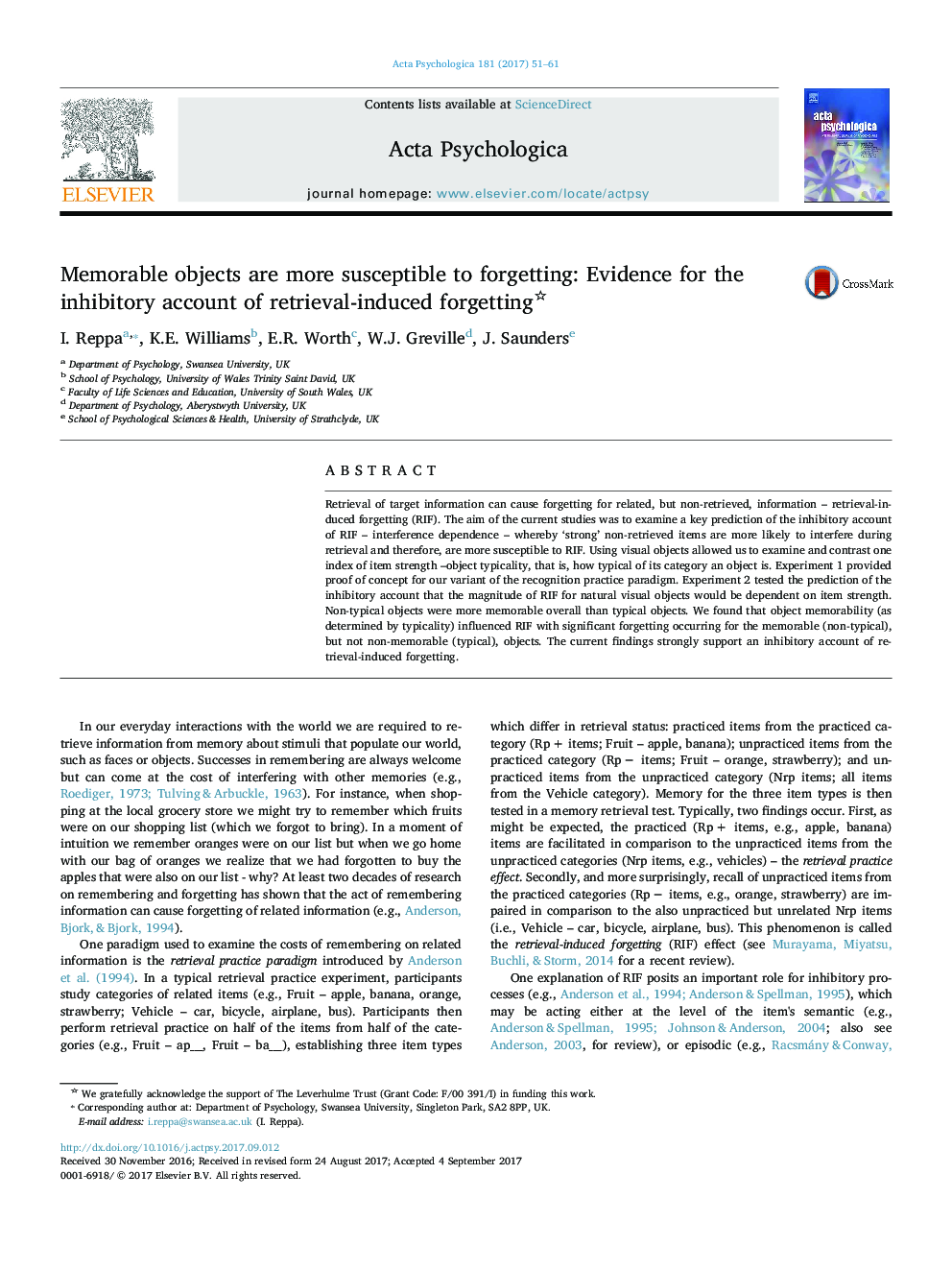| Article ID | Journal | Published Year | Pages | File Type |
|---|---|---|---|---|
| 5040170 | Acta Psychologica | 2017 | 11 Pages |
â¢We examined a key prediction of the inhibitory account of RIF, by manipulating typicality of visual objects. We found:â¢Non-typical objects were better remembered, that is, they were more memorable, than typical objects.â¢Memorable (non-typical) objects were susceptible to forgetting.â¢This finding is predicted and lends unique support to inhibitory accounts of retrieval-induced forgetting.
Retrieval of target information can cause forgetting for related, but non-retrieved, information - retrieval-induced forgetting (RIF). The aim of the current studies was to examine a key prediction of the inhibitory account of RIF - interference dependence - whereby 'strong' non-retrieved items are more likely to interfere during retrieval and therefore, are more susceptible to RIF. Using visual objects allowed us to examine and contrast one index of item strength -object typicality, that is, how typical of its category an object is. Experiment 1 provided proof of concept for our variant of the recognition practice paradigm. Experiment 2 tested the prediction of the inhibitory account that the magnitude of RIF for natural visual objects would be dependent on item strength. Non-typical objects were more memorable overall than typical objects. We found that object memorability (as determined by typicality) influenced RIF with significant forgetting occurring for the memorable (non-typical), but not non-memorable (typical), objects. The current findings strongly support an inhibitory account of retrieval-induced forgetting.
